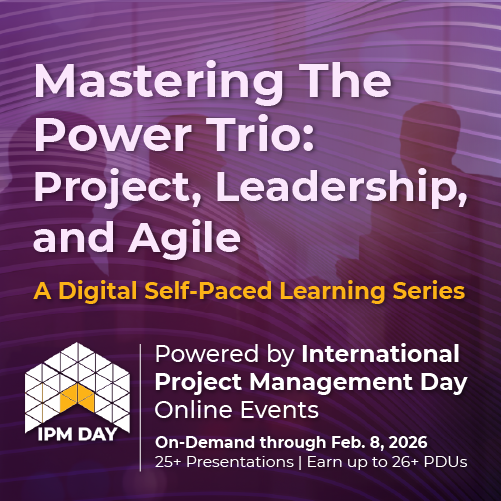By Jennifer Lapin
May 1, 2024
My PfMP® journey was not typical. I believe that all my effort and time invested alongside my unique journey of exam preparation were worthwhile and paid off in greater satisfaction and better result achieved at the end.
People ask me if it is necessary to take a preparatory course. It is not strictly necessary but based on my experience I strongly recommend taking one to significantly increase your success chances. PfMP® exam is one of the most difficult and thus only around 800 people passed it worldwide. Upon some research I have decided to amplify my preparation by enrolling to PfMP® related course on Portfolio Management from Australian courses provider PMCerty.
Although the Portfolio Management Standard is very structural, it is not simple to understand the whole process of Portfolio Management and its’ practical appliance, and to see a broad picture of Portfolio Management. After reading the Portfolio Management Standard several times I still had some questions about processes’ logic and there were some gaps in techniques due to absence of detailed elaboration in the Standard.
My PMCerty course took around 60 hours and helped me to enlighten the whole picture significantly. At the same time, I had several mentors who always were in touch and explained some misleading points.
PMCerty training helped me to better understand the Standard in a practical way and in many cases, it helped to focus my thoughts on some important issues which were not evident to me from the Standard.
Being a structural and visual person, who likes tables and pictures more than plain text, I prepared my own tool comprising all processes, inputs, outputs and tools of the Standard. That helped me to get a helicopter view of Portfolio discipline and to understand all interdependencies and similarities of the Standard. It was one of the crucial points for my success because it helped me to overlap all exam cases to the existing Portfolio Management Standard and put the puzzles together on the exam. But the most important part was not the tables by themselves but the very process of their preparation that required identification of every piece of inputs, output and tools and structuring and visualization of this information.
PfMP® exam is more than 90% based on the real situations and checks your ability to make decisions quickly and effectively, and therefore you do not need to memorize the entire Portfolio Standard content. However, due to the fact that in my case I had whole 4 months of waiting for the application’ approval as well as lockdown period and because I continued to practice daily, I memorized the Standard almost by heart. I want to emphasize that I did not need this at the exam. The only thing you should memorize for the exam is ITTO to be able to understand which part of the process you are in and choose the right decision. But you should be able to solve any Portfolio problems practically and based on the PMI view.
Additionally, I went through a lot of materials online. Every time I needed detailed clarification of the Standard, I was always able to find it online.
Some links below:
Overall, before the exam I have accomplished:
- I read the Standard more than 12 times.
- I read ECO 5 times.
- I scanned the PMBOK 6 edition.
- I read the Code of Ethics.
- I practiced around 2000 questions.
- I spent a minimum of 6 hours per day during the 2 weeks before the exam.
- I went through a lot of materials related to Tools and Techniques online.
- I structured all ITTO in the unified table.
What I knew before the exam:
- Portfolio processes and domains, and their definition.
- Portfolio ITTO by heart backwards and forewords.
- Details of all tools, inputs, and outputs, what they are comprised of, and most importantly, their meaning and practical use.
- All charts and graphs from the Standard: I knew and understood them.
- Definition and calculation of NPV, IRR, EVM and others.

Tips for PfMP preparation:
- Plan your exam preparation based on the new Panel Review deadlines. You can start your intensive preparation after the approval of your application. Based on my experience, I think that in general 2 months should be sufficient for thorough preparation if you daily spend 3-4 hours studying. It depends on your experience, studying opportunities and memory skills.
- When you start studying, it is advisable not to stop until the exam is passed, because it will take significant time to refresh and repeat all information after the break.
- Read the Standard and ECO very carefully trying to catch and understand every detail.
- See the whole process of Portfolio: how you balance the Portfolio, what documents need to be changed in different situations, who makes different decisions, why do we use different tools (e.g. Efficient Frontier, Investment Choice Analysis), what is your actions in case of Stakeholders’ changes, etc.
- Be confident and positive!
I had much more time for preparation for the exam and studying than I needed due to lockdown and PMI delays, and it helped me not only to be 100% prepared for the exam, but I was able to learn a lot outside the Portfolio Management Standard. I can see the practical appliance to the real Portfolio now that helps me professionally.
Because PfMP degree is about the best world practices, it gives you a very good basis for professional development and growth, and the preparation process teaches you to be persistent, thoughtful, indulgent, and driven.
If you pursue your goal, you will definitely reach it!
Enterprise PMO Leader | Certified Coach ICF
https://www.linkedin.com/in/jenlapin/
Jennifer Lapin is an accomplished Enterprise PMO Director with over two decades of experience across diverse sectors including retail, energy, airlines, and consulting. A results-oriented visionary, Jennifer specializes in establishing effective enterprise PMOs to drive transformational changes and the seamless implementation of complex IT projects.
Disclaimer: The ideas, views, and opinions expressed in this article are those of the author(s) and do not necessarily reflect the views of International Institute for Learning or any entities they represent.






